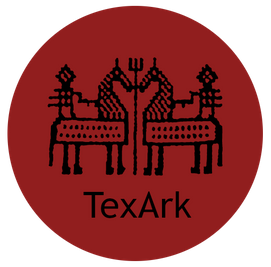The narratives of Viking legacy
Karolina Pallin
Around 2.5 years ago I moved from Sweden to the UK. With this change of culture, even though it is a small change, I begun to observe certain behaviours and values in both the Swedish culture and the new culture around me. Being grown up in Sweden I was taught about Viking Gods and Viking this and that in school. I never found it strange that a 1000 year old culture left a legacy that had an impact on the world around me. I found it an unnecessary and for many reasons an unwanted impact, but not strange.
Moving to the UK changed this. From early on, at the time without even looking for it, I noticed that the legacy is different here. It also didn’t take too much effort to see that the difference in the modern day Viking legacy didn’t fit the differences in the source material. Of course this sparked questions and the observations started. After 2.5 years I have moulded these questions and seen enough to know where and how I need to begin this research. It must begin in the question of legacy. It can be argued that all legacies are just distorted mirror images of their originals and that the Viking legacy is no different. In part I agree with that, all legacies are coloured by their own history. Some are however different, some take up a greater space and have greater impact on the modern world. If they also, like the Viking legacy, are not continuous, are widely spread, and deals with issues like inequality in both power structures, ethnicity, race and gender they have to be scrutinised. Therefor this research aims to understand the narratives that create the Viking legacy.
There seem to be certain arenas in the society where these narratives are created and upheld, so far I have identified: Museums, scientific research, re-enactment, education, inter-personal relations (who apart from this doesn’t touch on the subject of history or pre-history), politics, branding and popular culture / popular media.
The project belongs to Karolina Pallin and will be a part time occupation as long as it is carried out without external funding. The pilot study will aim at the museal arena.
________________________________________
The narratives of Viking legacy – a pilot study
(ViS-Conference "The Viking Age as a Foreign Place", Olso 2021)
Abstract
It can be argued that all legacies are just distorted mirror images of their originals and that the Viking legacy is no different. However, for being a discontinued culture, the fascination with the Viking world takes up greater space and has a greater impact on the modern world than most time periods do. Since today’s Viking legacy is widely spread and deals with inequality in power structures, ethnicity, race, and gender, it must be scrutinised.
This study begins with the question of legacy and what sort of narratives drives the process of creating it. The study points to several arenas in the society where these narratives are created and upheld. Some of these are museums, scientific research, re-enactment, education, branding and popular culture. This pilot study lays the groundwork for a longer study aiming to understand narratives in the context of Viking legacy, and also as a mechanism for opinion building in general.
Looking at prognoses for the upcoming decennia with polarisation between groups in society as a keyword, this kind of humanistic research might help understand history’s role in such a development. Who claims heritage? How and why is it done?
The reality of Viking afterlife: The presence of silk in the Viking narrative
(The 28th European Association of Archaeologists Annual Meeting” Budapest, 2022)
Abstract
This paper presents a study within the larger project “The narrative of Viking legacy”, which studies the difference between today’s narrative of the Viking Age and the archaeological material. The pilot study was presented at the conference The Viking Age as a Foreign Place, at The Center for Viking Age Studies, Oslo. This second study is presented for the first time here at the EAA annual meeting.
Grave goods can be seen as objects supposed to accompany humans into the afterlife. The Viking afterlife is, according to the Sagas, a mythological place. However, the reality of the Viking afterlife is how we know them. A reality where the archaeological material is of most importance. The Vikings live in the stories we create about them and the effect these stories have on us and our society. They live in the “Viking narrative”
In Scandinavia, silk first appears in the grave goods in the Viking era, marking a change in available luxury goods. As one of a handful of luxury goods that archaeologically defines this era, silk should naturally be a large part of the Viking narrative.
This study explores Viking attributes found in the Viking narrative, with a particular focus on silk as a defining item and a defining luxury concept. The study shows that silk is found in some parts of the narrative and is absent in others. The aim of this paper is to discuss this clash in the narrative and why this is both interesting and problematic.



